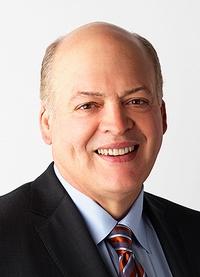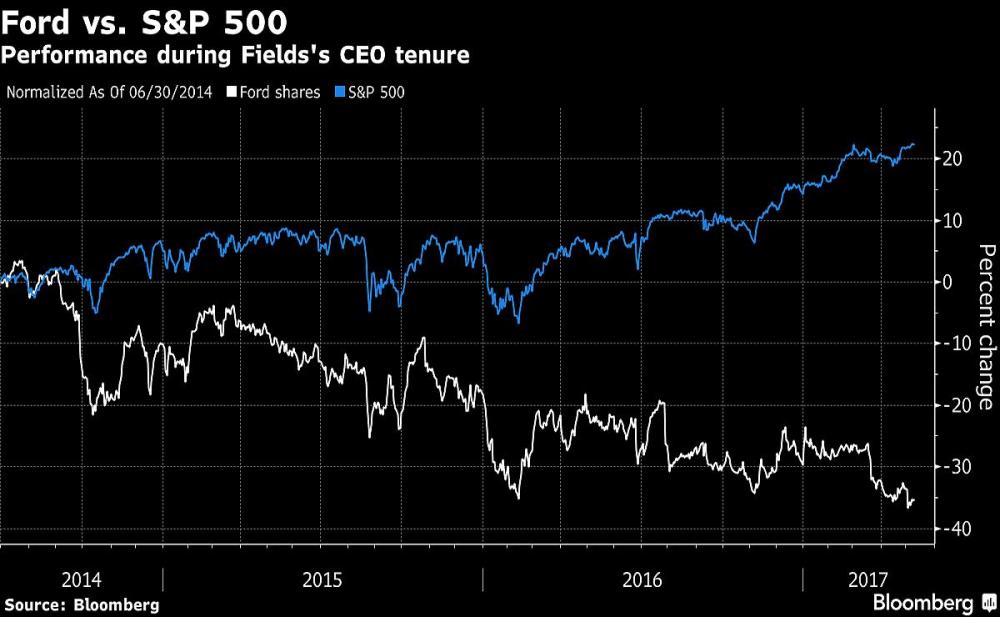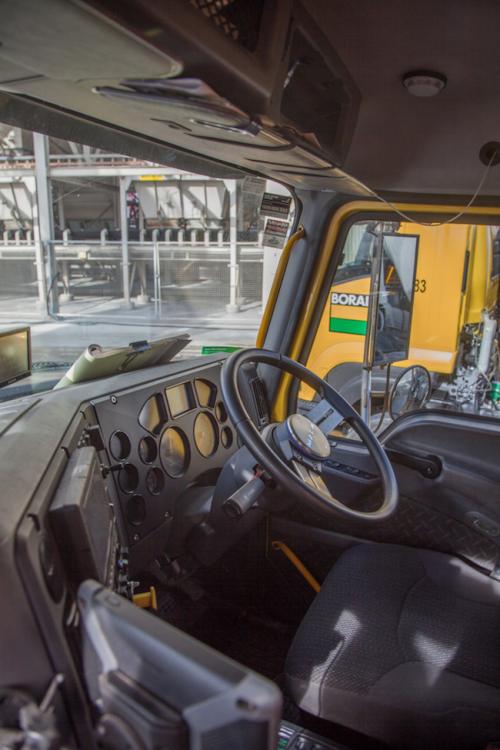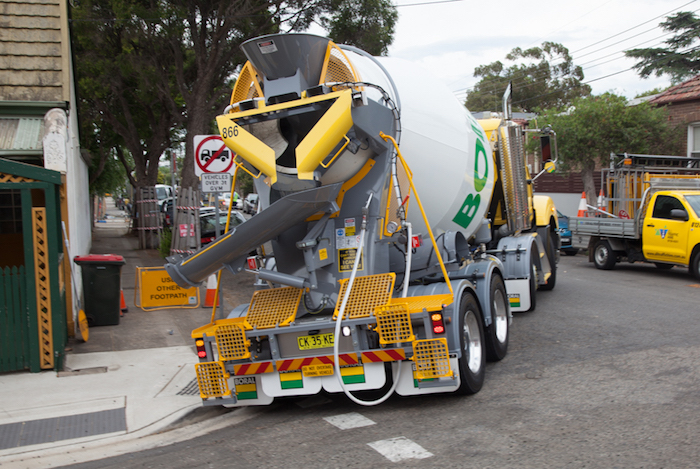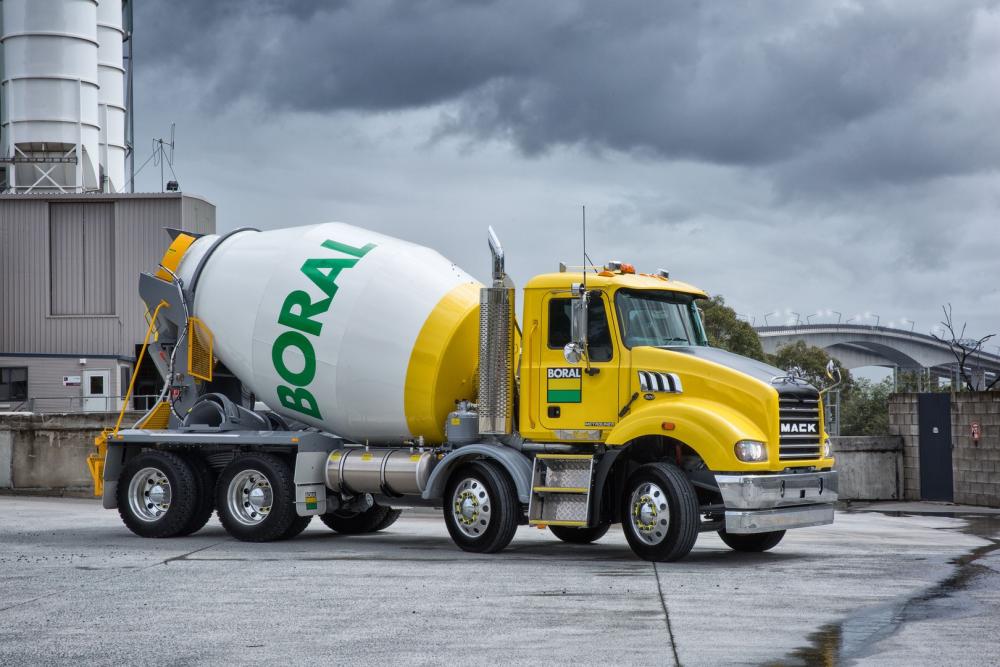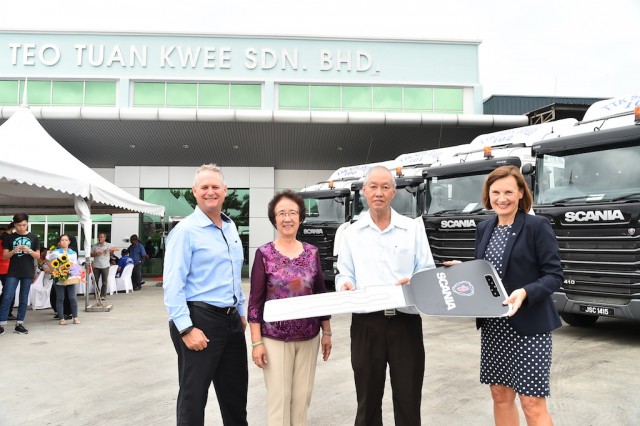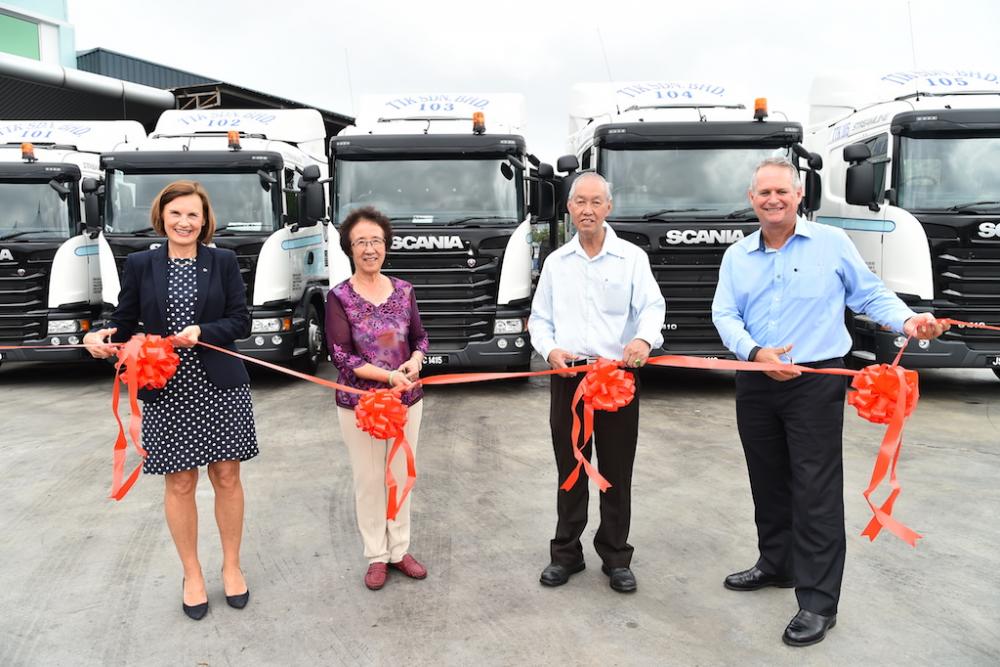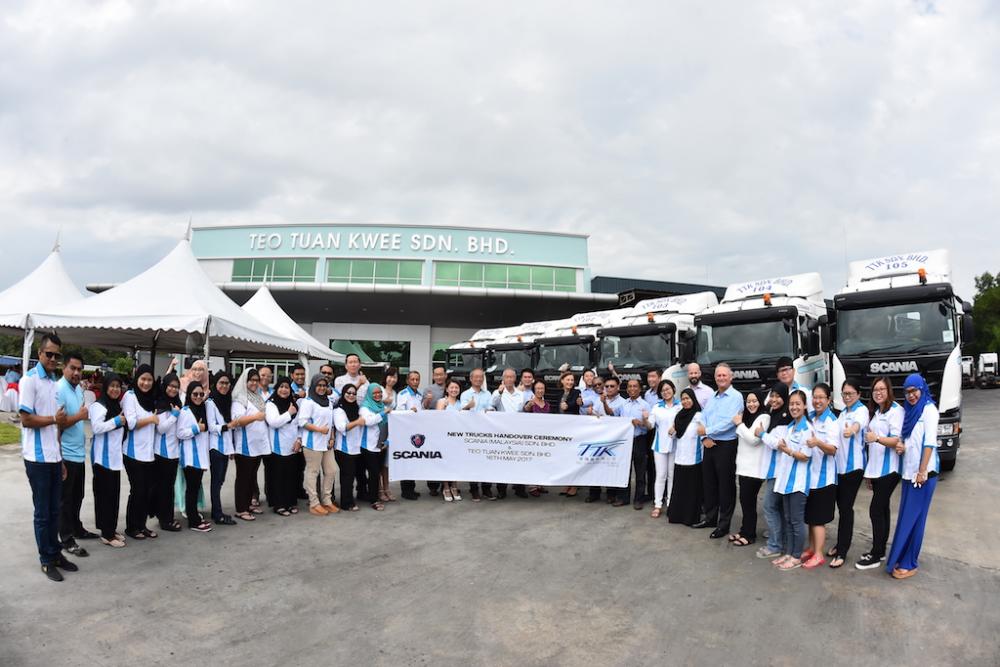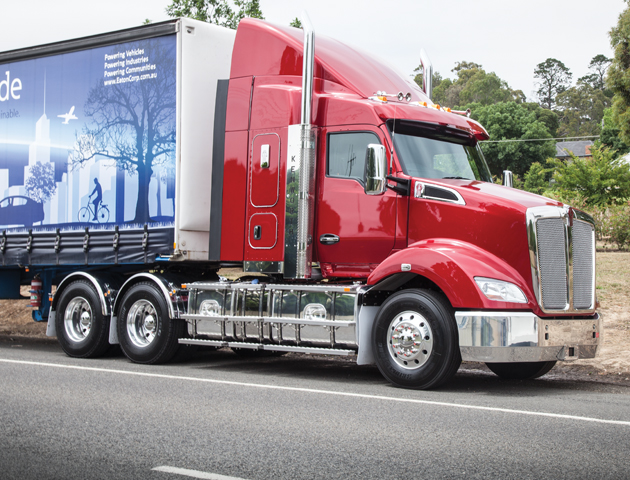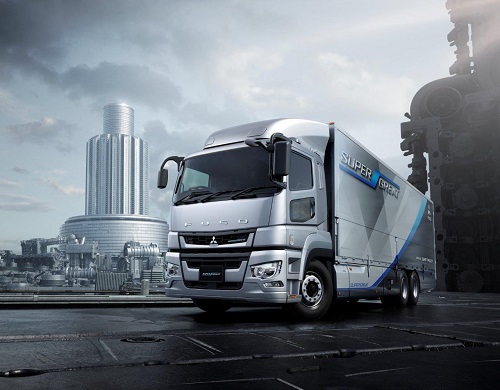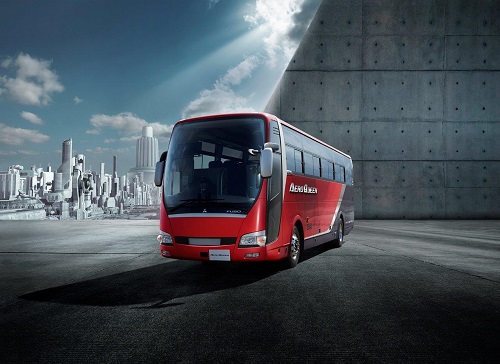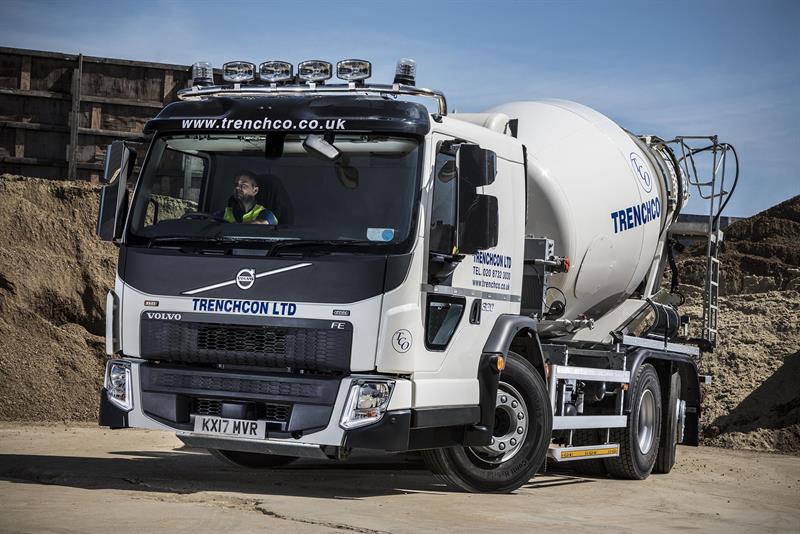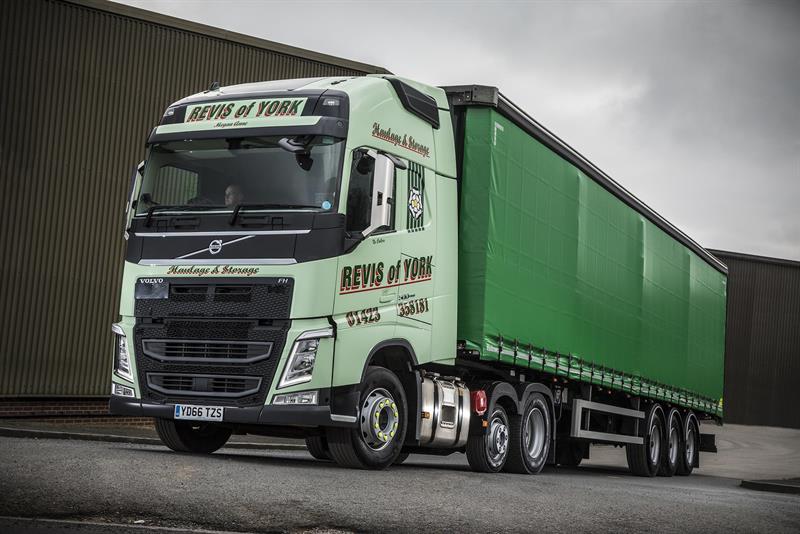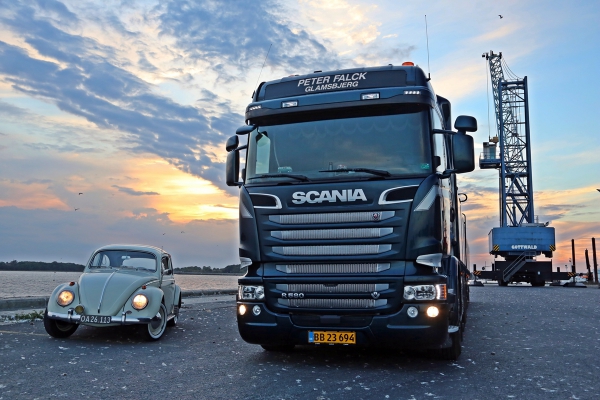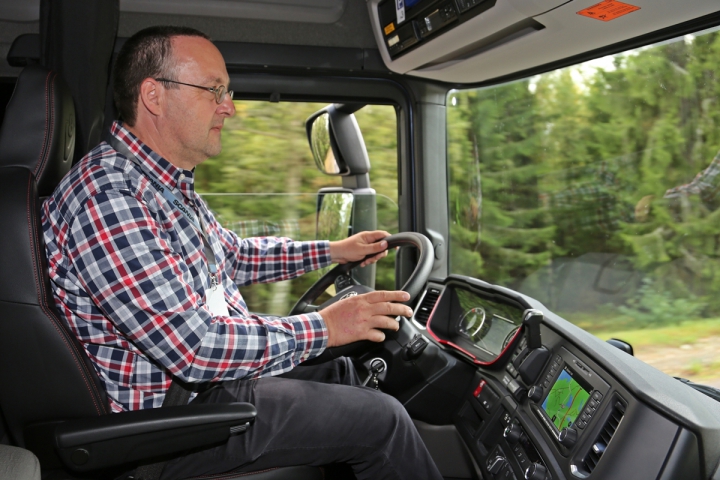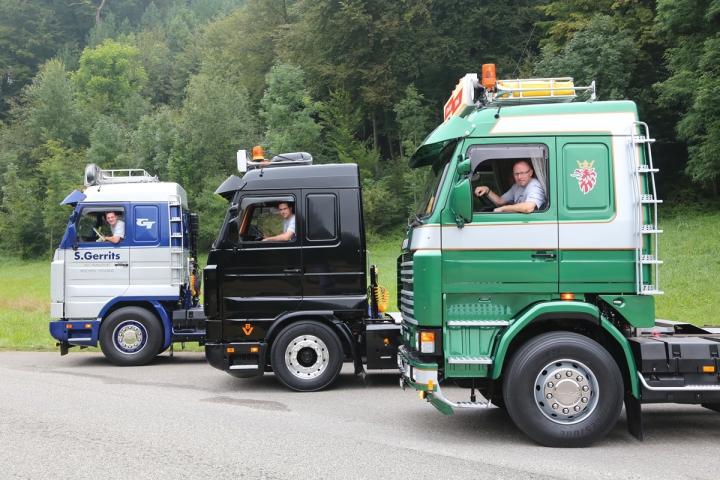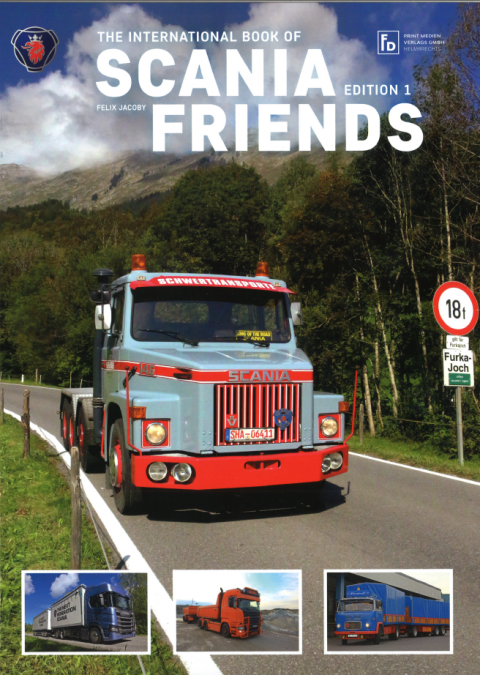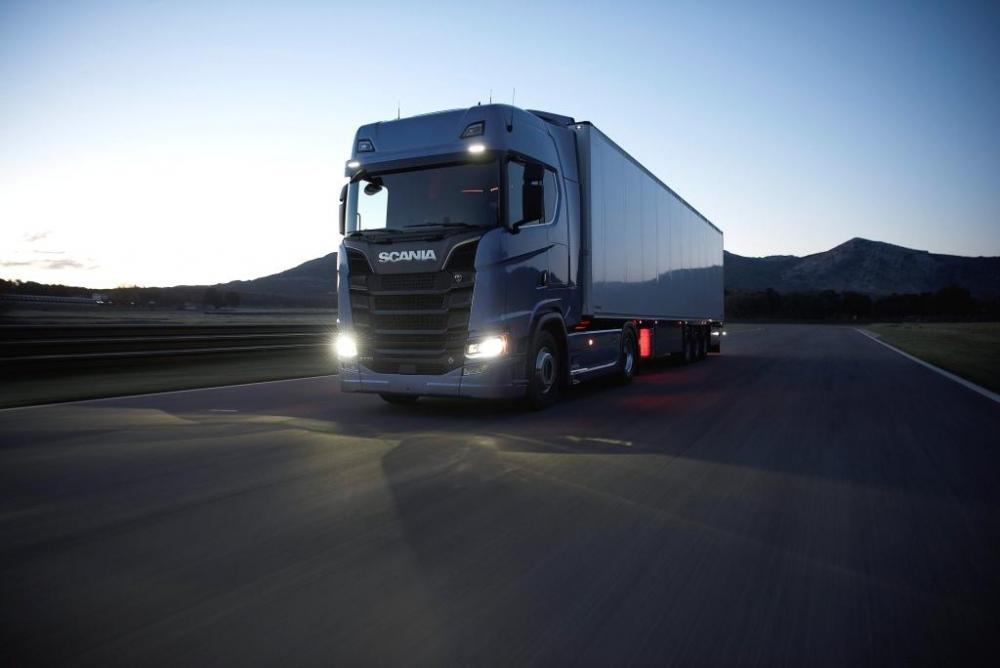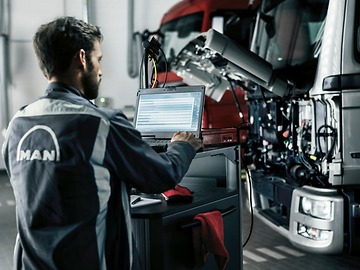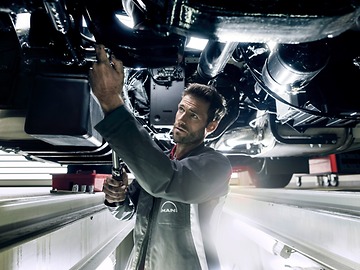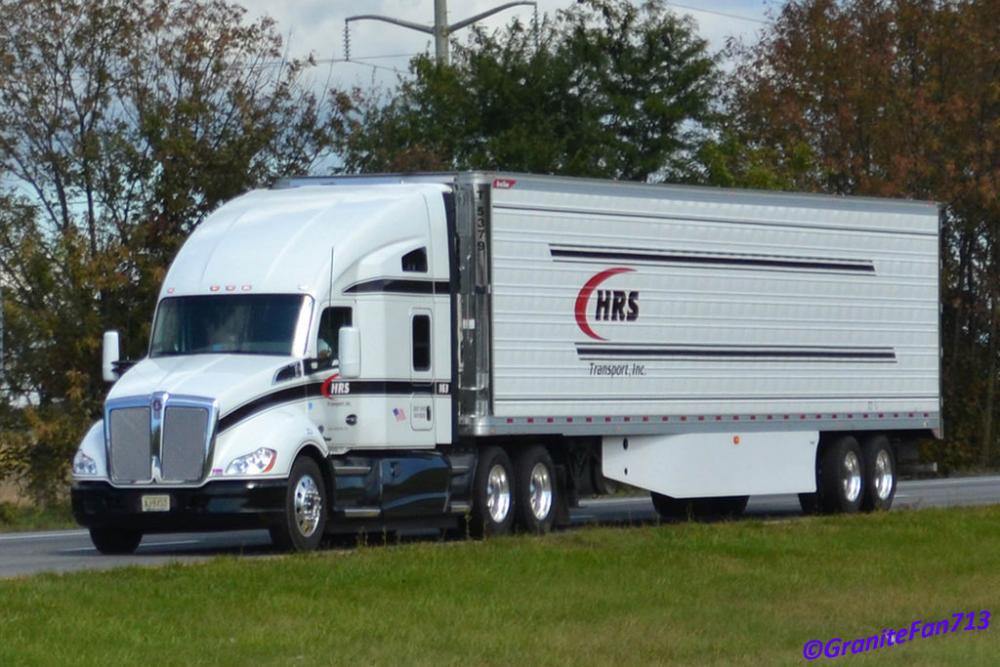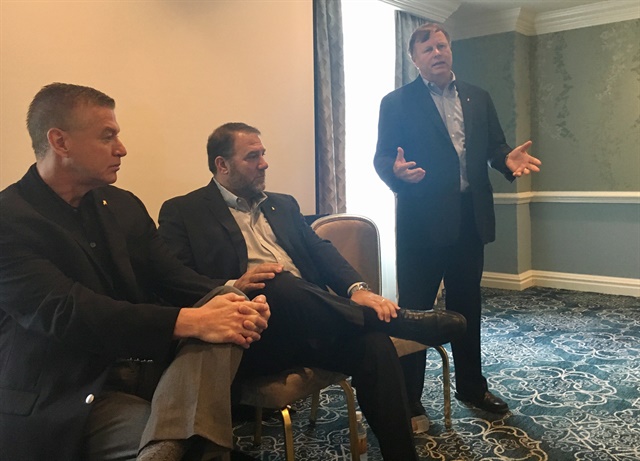
kscarbel2
Moderator-
Posts
18,934 -
Joined
-
Days Won
114
Content Type
Profiles
Forums
Gallery
Events
Blogs
BMT Wiki
Collections
Store
Everything posted by kscarbel2
-
Fields to retire as Ford CEO in management shake-up; ex-Steelcase chief Jim Hackett named new CEO Automotive News / May 22, 2017 DETROIT -- Ford Motor Co., in a broad management shake-up, named Jim Hackett, former CEO of Steelcase, as its new CEO, replacing Mark Fields, who is stepping down amid pressure from shareholders over a slumping stock price. Ford said Fields, 56, has elected to retire from Ford after 28 years with the company. “We’re moving from a position of strength to transform Ford for the future,” Executive Chairman Bill Ford said in a statement Monday. “Jim Hackett is the right CEO to lead Ford during this transformative period for the auto industry and the broader mobility space. He’s a true visionary who brings a unique, human-centered leadership approach to our culture, products and services that will unlock the potential of our people and our business.” Hackett, 62, most recently served as chairman of Ford Smart Mobility. Ford created that subsidiary last year to handle its investments in autonomous vehicles and new mobility services. Fields has been pouring billions into self-driving cars and ride-sharing experiments as its traditional car business has struggled in a slowing U.S. market. In addition to the CEO changes, Ford announced: Jim Farley is appointed executive vice president and president, Global Markets. He previously served as president of Ford’s Europe, Middle East and Africa. Farley will be returning to Ford headquarters in the U.S., a spokesman said. Among his new duties, Farley will preside over the Lincoln luxury brand. Lincoln President Kumar Galhotra will report to Farley. Joe Hinrichs, formerly president of the Americas, was appointed executive vice president and president, Global Operations. Raj Nair will continue to serve as head of Ford product development, and will report to Hinrichs, a spokesman said. Marcy Klevorn is appointed executive vice president and president, Mobility. Those three appointments are effective June 1. New leaders to succeed Hinrichs, Farley and Klevorn will be the subject of a future announcement, Ford said. Paul Ballew was also appointed vice president and Chief Data and Analytics Officer. Mark Truby also replaces Ray Day as head of communications. Day will stay on to “provide consulting services” through the end of the year. Truby will report to Bill Ford. Forbes first reported the management changes Sunday night. Ford shares were up 1.75 percent to $11.06 in pre-market trading. Stock down Fields, 56, had been under pressure for the company’s lagging stock price and lower-than-expected profits so far this year. Board members had recently reportedly questioned Fields’ strategy for the future of the company, which relies on heavy investments in driverless and electric vehicle technology. Since Fields took over as CEO from Alan Mullally in July 2014, Ford’s stock price has fallen nearly 40 percent. Last week, Ford announced it would slash 1,400 salaried workers in North America and Asia as a cost-cutting move as it continues to spend on what it calls “emerging opportunities.” That type of move, normally reserved for distressed business units and economic downturns, came amid a relative boom time for the industry. Ford career Before he was named CEO, Fields served in a number of positions, including COO and president of the Americas. During his time leading the Americas, Fields was the architect of Ford’s “Way Forward” plan to restructure the business as its profits disappeared during the last industry downturn. He also served as CEO of Mazda. When he took over for Mulally in 2014, Fields inherited an automaker on the verge of posting record profits. He also oversaw the transformation of the profit-generating F-150 to include an aluminum body, as well as dozens of other product launches. Fields also appointed a separate president to head the Lincoln Motor Co. in an effort to revive the luxury brand. Executives, including Chairman Bill Ford, praised Fields early on and said the transition between CEOs had been seamless. But Fields came under fire in recent years as Wall Street remained unimpressed with Ford’s profits and plans for the future. At last year’s annual meeting, one shareholder even asked to bring back Mulally -- a popular figure who helped save the company during the financial crisis. .
-
May 10, 2017 Camp Quality Convoy Victoria 2017 kicked-off before sunrise on the April 30th, with a procession of trucks making their way into the Avalon Airport. In the morning the truckers tucked into a delicious breakfast, and held their breath at the excitement of the Lead Truck bidding (an initiative where entrants raised a minimum of $1,000, and bid against each other to lead the convoy). When the dust settled, Daniel Crawford of Hallam Truck Centre came out on top! He won the honour of leading the convoy of trucks and motorbikes on the 50 kilometer drive to Tabcorp Park in Melton. The 300 polished and shining trucks made for an incredible spectacle stretching out into the distance. Locals came out to watch the procession go by and take in the display of motoring glory. A Family Fun Day at Tabcorp Park was held after the convoy, which was exceptionally well supported by the truckers and bikers (and their families), as well as many Melton locals. It was incredible to see! The day was full of family fun, good food, impressive vehicles (both bikes and trucks) and great people. The Show and Shine at the Family Fun Day was a crowd favourite, with all the drivers for taking the time to clean and polish their rigs – they were a truly impressive sight! Rod Patterson took out the People’s Choice for the event. Camp Quality thanks everyone involved in making the event a reality, and for helping us to raise $45,000! That's enough to deliver one Middle Camp this year so that kids can take an essential break from the stress and intensity of cancer. If you would like to be a part of Camp Quality Convoy Victoria 2018, please contact our Victorian Office on 03 9329 8660 * Camp Quality’s purpose is to create a better life for every child living with cancer in Australia. We are committed to delivering national programs that build resilience and optimistic behaviours for all children (0-13 years) living with cancer in Australia. .
-
Diesel News Australia / May Diesel took a trip to the Boral Enfield batching plant in Sydney to try driving a low rider. It was an opportunity to have a look at and experience the difference between the traditional agitator and Boral’s new low rider–design agitator being trialled there. This plant is one of many in the Sydney area working at full capacity as a series of major infrastructure projects have increased demand for concrete in the city. To get a handle on the improvement achieved by Boral, Diesel took two agitators out to a job. The first was the conventional agitator built in the past, and the second was using the new design. Apart from the new layout every other aspect of the truck was the same. Anyone who has steered an agitator at all will reaffirm the inherent instability of the platform. It’s a bit like being on roller skates, you have the feeling one false move and you will fall over. This makes the driver keep well within the parameters of safety, especially on roundabouts and other sharp turns. Jumping into the truck for the second delivery was a complete contrast. The truck felt just like any other, it could have been a fully loaded tipper or box truck. Even in a straight line the improved stability is obvious. When it comes to corners and roundabouts the driver feels in full control. At the same time there is great feedback from the truck. The seat of the pants feeling tells you just how the rear end is reacting. The result is a much more secure feeling at the wheel. You are no longer riding on roller skates, but a normal stable truck. The resulting truck, from what has been a two-year process, is a revelation. The prototype went on the road in April 2016 and all of the drivers in the depot who had a go with the truck wanted to drive it rather than their own. The principles behind this new design seem obvious when you look at the finished product. However, no one seems to have even thought about this in recent years. The question is, just what made Merv Rowlands, Boral Fleet Engineering Manager – Logistics, start thinking about this issue in a new way? “I was visiting Mack’s Mod Centre in Brisbane, where they make all the company-specific changes,” says Merv. “I was looking at some agitators which were for us, and the nature of the suspension and the cross members I saw just didn’t look right to me. “Within Boral Logistics, we only use Primaax suspension on all of our tippers and tankers. Then we looked at what they do in America and Europe – there’s no way they would fit air suspension on agis. Their chassis start at 9.5mm and go up, they even use double-wall chassis. They clearly see the hardest job for a chassis is to carry an agitator. “You can see it on our older agitators. Nearly every one will have a sub-frame crack. That will disappear now, because there is no sub-frame to crack. We are now having a lot more thoughts about what we are going to do in the future.” Read about the changes Boral made in the agitator design here. .
-
Big Wheels Malaysia / May 18, 2017 With almost four decades of experience in the transportation industry, Teo Tuan Kwee Sdn Bhd (TTK) knows what works best so it says a lot when the company has opted to buy another 50 Scania trucks to join the existing 182 Scania trucks it already owns. Operating a predominantly Scania fleet, TTK specialises in services such as palm oil tanker transportation, bonded lorry tankers, cargo transportation and container haulage and this is one of the largest ever orders in Malaysia from the Swedish company. “The vision is for TTK to become an outstanding and reputable logistics company in Malaysia and Singapore in next 5 years,” said TTK director Teo Chee Ben (张志敏) in Johor Bahru when receiving the latest batch comprising 26 units of the Scania G410LA6x2MSZ truck. Teo said the Johor based company selected its trucks based on the criteria of quality and high uptime, adding that the decision to buy more Scania trucks was also because of the good maintenance service provided. With its latest acquisition – facilitated by Scania Credit – TTK is also the first company in the southern region to acquire the Scania G-series trucks, which it will be using for its long-haul operations. The hardworking G-series can be configured to suit a huge range of applications – from long-haulage and distribution to the toughest off-road jobs – while providing powerful performance, fuel economy and safety. “We are proud to be a partner of TTK for its long-haul operations and for the long haul. It is investing in the total operating economy that Scania offers to create the best profitability for our customers,” said Managing Director, Scania Southeast Asia, Marie Sjödin Enström. “This is achieved through Scania’s sustainable transport solutions,” added Marie. TTK’s new trucks also come with the two-year free Scania Maintenance package, two years of free 24/7 Scania Assistance and a ten-year free Fleet Management System (FMS). The FMS is activated via a communicator that comes standard with the Scania trucks enables operators to achieve up to 10% fuel economy, collecting data on board Scania trucks that provides valuable insight, tracking and diagnostics into the driver and vehicle behaviour. This can bring significant benefits in increased uptime, improved safety and reduced operating costs; especially if coupled with Scania Driver Training and Scania Driver Coaching. Just minor adjustments to an experienced driver’s habits can result in fuel savings of up to 10% with the information acquired while keeping a constant speed can significantly improve fuel economy and reduce maintenance costs. Scania’s smart data collection makes this quick and easy. .
-
Kenworth T610 recognised by Good Design Australia Prime Mover Magazine / May 22, 2017 The aerodynamic design of Kenworth’s new T610 and T601SAR models has been recognised by Good Design Australia, the organisation behind Australia's annual Good Design Awards program. According to PACCAR Australia, the T610 received a ‘Good Design Selection’, with the judging committee stating, “The Jury takes their hat off to the design and engineering team. This is design excellence at its best.” According to Good Design Australia, involving customers in the design phase has resulted in a user-focused outcome. “The driving position in the Aero is just beautiful and it is clear the designers put driver comfort first. Overall, this project exemplifies good design at all levels.” .
-
UD Trucks Rolls Out Flagship Cabover for Japan
kscarbel2 replied to kscarbel2's topic in Trucking News
UD Trucks Press Release / April 18, 2017 . -
Mitsubishi Fuso Press Release / May 15, 2017 Kawasaki, Japan - Mitsubishi Fuso Truck and Bus Corporation (MFTBC) today announced the launch of both the “Super Great” heavy-duty truck, which has undergone a full model change for the first time in 21 years, and the “Aero Queen” and “Aero Ace” heavy-duty touring buses. In a conscious move to modernize Japanese driving habits and increase safety and efficiency, all these new trucks and touring buses are equipped with the new automatic mechanical transmission (AMT) as standard, a first time in Japan. The new FUSO models, that include Daimler technologies also used in other brands of the global CV Leader, feature some market-first top-class safety features, the best fuel efficiency in the market, and maximum maneuverability bringing the most comfortable driving experience to the road. “With this double launch we demonstrating FUSO’s ability to get back to the leadership position in our home-market Japan…” says Marc Llistosella, President and CEO of MFTBC and Head of Daimler Trucks Asia. Llistosella continues, “These flagship vehicles feature state-of-the-art technologies that enable best in class fuel efficiency, safety and comfort that will make them the first choice for customers and their drivers alike. At the same time, we invest heavily in our dealership facilities and the training of our sales and service staff, to ensure that our customers get the best overall package to make them successful in their business. I am confident, that with this revolution at FUSO we will be able to gain significantly market share” “Super Great” Heavy-duty Truck For the first time in the 21 years since 1996, the interior and exterior of the model in this range have been refined in a full-scale model change. Installed with two types of newly developed small-displacement engines (Models 6R20, 10.7 liters, 6S10, 7.7 liters), the new models have become extremely light compared with conventional vehicles. A newly-developed 12-speed automatic mechanical transmission (AMT) called “ShiftPilot” is installed in all vehicles, achieving comfortable, smooth shift operation. Advanced safety technologies have been implemented to reduce large truck accidents and enhance safety. These technologies include the “ABA4” brake to mitigate collision damage, and “Active Attention Assist” monitor that detects pedestrians ahead, developed as a part of the evolution of the MDAS-III technology for monitoring driver driving attention, and “Active Sideguard Assist,” the first technology in Japan to warn against danger hidden in the left blind spot. “Proximity Control Assist,” which comes with automatic stop and start functions, in addition to auto cruising, equipped with a function to maintain the proper distance between two vehicles, is also a new function added to the new Super Great truck. “Powertrain 3-D forecast control,” (optional) for forecasting road gradients through GPS, and 3-D map information during auto cruising, assures low fuel consumption during cruising and improves economy and over-all comfort. As a telematics function, “Truckonnect” is now provided in the “Super Great” as standard. This new function allows customers the ability to check all the trucks’ vital information in real-time through the customer’s personal computer systems. Positions of vehicles, cruising routes and problems such as vehicle failure, and accidents can be checked using this function. It also allows real-time determination of safe truck driving by drivers. Basic items such as digital tachographs can also be checked, allowing efficient bus operation, including management of fuel consumption. MFTBC is proud to be the first Japanese Commercial Vehicle Manufacturer to offer these specialized services, and therefore, will offer free initial installations, free service communication, and a free digital tachograph. Makoto Tanno, the Director of the Retail Operations Fuso Japan, Mitsubishi Fuso Sales Japan, comments, “We firmly believe that the New Super Great will be a product that will become an industry benchmark, satisfying customer needs for economy, safety and comfort and even leading to AMT becoming an industry standard.” Tanno concludes, “With the introduction of our new telematics service “Truckconnect”, we provide another industry first in Japan, that continuously connects our customers and their fleets. We will further develop Truckconect into a full connectivity ecosystem, which enables new efficiencies and provides new profit-streams for our customers.” “Aero Queen” and “Aero Ace” Heavy-duty Touring Buses While they keep the elegant and well-designed exterior of their successor, the new “Aero Queen” and “Aero Ace” have been substantially redesigned and improved in terms of safety and comfort to further extend the leading position of FUSO as a Bus manufacturer in the market. For the first time in Japan, the “ShiftPilot” 8-speed automatic mechanical transmission (AMT) is installed on all heavy-duty tour buses as standard, to provide a high level of safety, comfort and efficiency.In the area of safety performance, “ABA3,” which is an advanced version of the “AMB” brake for alleviation of collision damage, is installed. Also installed for the first time in buses are new technologies including the “Active Attention Assist,” which monitors driver attention through a driver-facing camera, developed as a further evolution of the MDAS-III and “Proximity Control Assist” technology. This adds automatic stop and automatic start functions to auto cruise, and includes a function to maintain the proper distance between cars to help alleviate driver fatigue during traffic congestion. A new small-displacement engine (model 6S10, 7.7 liters) is installed to increase the number of passenger seats by decreasing weight. The Aero Ace now has larger trunk room to meet increasing demand for the transport of inbound tourists. According to Hidekazu Kanno, Head of Fuso Bus Marketing & Sales Japan, and Mitsubishi FUSO Bus Manufacturing Co. Ltd. President, “The new “Aero Queen” and “Aero Ace” buses are the touring buses most used by travelers in Japan. The new models maintain the same bus body appearance as those of the earlier models that were highly valued in the market, but have greater safety performance, allowing their passengers to enjoy a safer bus ride. The vehicle control system and power train are shared with other bus brands of Daimler and therefore offer world-class standards. These buses are vehicles that have been manufactured with future automated driving in mind. We are convinced they represent the benchmark for safety and quality in the market.” . .
-
GM to pull of out India market, sell South Africa plant
kscarbel2 replied to kscarbel2's topic in Odds and Ends
Isuzu's Business in South Africa Isuzu Press Release / May 18, 2017 Plan to make ITSA (Isuzu Truck South Africa) become Isuzu's wholly-owned subsidiary and LCV business completely controlled by Isuzu Isuzu Motors Limited (headquartered in Shinagawa, Tokyo and headed by Masanori Katayama, President and Representative Director, hereinafter called "Isuzu") and General Motors Company (headquartered in Detroit, the U.S.A. and headed by Mary Barra, Chairman and CEO, hereinafter called "GM") reached an agreement under which GM will transfer the pickup truck business of General Motors South Africa (hereinafter called "GMSA") to Isuzu Truck South Africa (Pty) Limited (hereinafter called "ITSA") in order for Isuzu to reinforce its commercial vehicle and pickup truck business in the South African market. Before the business transfer, Isuzu will purchase from GMSA a 30% equity stake in ITSA, which assembles and distributes Isuzu commercial vehicles, whereby Isuzu will transform the company into its wholly-owned subsidiary with a new company name of "ISUZU MOTORS SOUTH AFRICA (Tentative)". Isuzu will further reinforce sales, marketing and after-sales activities for commercial vehicles and pickup trucks to establish a foundation for sustainable, long-term business growth in the South African market. Outline of the company Company name ISUZU MOTORS SOUTH AFRICA (tentative) Change of company name Planned in June 2017 Location Johannesburg, South Africa Representative Hiroaki Sugawara Shareholder Isuzu Motors Limited (100%) Description of Business Assembly, sales and after-sales of Isuzu commercial vehicles and pickup trucks for South Africa and surrounding countries *The assembly, sales and after-sales of pickup trucks will start in or after January 2018. Capital 80 million South African Rand (about 650 million Yen) -
Volvo says to start assembling trucks in Kenya
kscarbel2 replied to kscarbel2's topic in Trucking News
Volvo to set up Sh2.5b assembly plant in Mombasa The Standard / May 19. 2017 Swedish truckmaker Volvo plans to set up a Sh2.5 billion vehicle assembly plant in Kenya’s coastal city of Mombasa. Volvo said the factory would be ready for commissioning in early 2018 and would have a capacity to produce 500 units, which would be scaled up over time to reach 2,000 units. Senior Volvo management said yesterday the plant would also serve the region. -
Reuters Africa / May 18, 2017 NAIROBI - Swedish truck maker AB Volvo is to start assembling vehicles in Kenya, part of a series of investments aimed at boosting the company's presence in the region, the company said on Thursday. The East African nation undermined what was a thriving local assembly industry in the 1990s with policies that encouraged cheap secondhand imports. It is now seeking to attract manufacturers back to help create jobs and support growth. Volvo is only the latest vehicle maker to announce plans in recent months to start assembling locally, following moves by Volkswagen, PSA Peugeot and CNH Industrial's Iveco. Volvo will also open an office in Kenya to serve East Africa, open 20 workshops around the region and a parts warehouse, it said in a statement. The company said it was partnering with local firm NECST in the plan, which will create about 300 direct jobs. "There is a significant potential for the premium truck business as regional economies grow, infrastructure investments expand and the business environment remains investment friendly," Claes Nilsson, president of Volvo Trucks, said in the statement.
-
Transport Engineer / May 19, 2017 Concrete supplier Trenchcon has taken delivery of a Volvo FE low-entry cab (LEC) 6x2 rigid for truckmixer applications – the first vehicle of its type to enter service in the UK. The operator needed a specialist 6m³ mixer for work in inner London, as managing director Ronan Byrne explains: “With the Volvo FE LEC, we believe that we are paving the way for a new type of construction truck for use in the urban environment.” Safety was top of the agenda when it came to vehicle selection, he adds: “The greatly enhanced direct vision afforded the driver – which is aided by his sitting about 400mm lower in this truck compared to a standard six-wheel mixer – we believe brings the percentage chance of harm to such as cyclists and pedestrians, down by a significant amount.” Supplied by Volvo Truck and Bus Centre London, at Enfield, the new addition has a 320bhp engine, coupled to a direct top I-Shift automated gearbox and a single reduction rear axle, and is equipped with a CIFA truck mixer body, by Wilcox, and a Brigade four-camera safety system. The FE LEC also features air suspension on all three axles and a hydraulic steered tag-axle. The safety cab features two step entry and a lowered window in the nearside door to increase visibility for the driver. “The type of work we do means that the FE LEC doesn’t need to go off road. When we spec’ed it up, we chose Volvo for the best quality and the fact that this truck is top-of-the-range and entirely suited to our needs,” says Byrne. “We needed the rear-steer lift axle for maneuverability and the I-Shift automated gearbox as the best solution available to help the driver manage deliveries through the constant stop-start heavy traffic. It’s the first truck of its kind for Volvo and I think that we will see many more operators opting for this type of mixer in London.” .
-
Transport Engineer / May 16, 2017 Haulage firm Revis of York has taken delivery of 25 Volvo FH 6x2 tractors with lightweight mid-lift axles – the first of a 35-unit order. The factory-fit axles were key to the decision, says the operator, as is the Volvo Gold R&M arrangement through dealer Crossroads Truck and Bus. The latest additions to the Revis fleet all have 500bhp engines and Globetrotter cabs. They are supplied on a three-year contract hire and are transporting bagged fertiliser to farms across the UK. “This deal with the Gold R&M agreement means we know where we are,” says director John Revis. He also rates the service from dealer Crossroads: “We’re delighted with the support we receive and are especially appreciative of the service whereby the trucks are collected on Friday evening and returned to us at Saturday lunchtime. We don’t lose a moment’s uptime and our six-weekly inspections, servicing and any repairs are simply not something we really need to think about.” The new trucks are expected to cover 160,000km a year and are on the road five days a week. “Running at 44-tonne most of the time, our operation is weight critical and the new axles really help us in this respect,” adds Revis. With the vehicles operating on anything from motorways to farm tracks, vehicle robustness and versatility is a must: “The farm tracks can be a big ask, but the new Volvo FH 6x2 tractor units are just perfect across all the conditions we face,” he says. “The I-Shift is far and away the market-leading automated gearbox and personally, I can’t see it being knocked off its perch anytime soon.” .
-
GM to pull of out India market, sell South Africa plant
kscarbel2 replied to kscarbel2's topic in Odds and Ends
Engineering News / May 19, 2017 The decision by General Motors to pull out of South Africa will “have negative consequences on component suppliers to the company’s existing Chevrolet assembly lines”, says South Africa’s National Association of Automotive Component and Allied Manufacturers (NAACAM) executive director Renai Moothilal. “We are obviously concerned at the announcement that General Motors will be stopping the production and sale of its vehicles in South Africa.” Moothilal said on Friday that Naacam did not yet know how many component suppliers would be affected by GM’s shock decision, announced on Thursday. The decision would see GM South Africa (GMSA) cease Chevrolet production and sales in South Africa by the end of 2017. Isuzu KB one-ton and Isuzu truck production would continue, under the Isuzu Motors South Africa (IMSA) banner. Isuzu Motors announced on Thursday that it would acquire GMSA’s Port Elizabeth plant from GM, to form IMSA. Isuzu assembly at GMSA made up around 50% of production at the Port Elizabeth plant. GMSA total production was well in excess of 2 000 units a month, on average. Moothilal added that Isuzu Motors’ announcement at least offered a “silver lining” to GM’s decision to depart South Africa. “We view this as a level of confidence shown in South Africa as a manufacturing destination. We look forward to working with Isuzu to find ways to optimise the use of South African suppliers.” Moothilal added that it was Naacam’s understanding that GM exited South Africa “on the back of a weak domestic sales outlook, and a general reprioritisation of markets in terms of its global strategy. “At the same time, the company announced its exit from India. Thus the decision seems to be more GM centric. However, we remain of the view that a flourishing domestic and regional market is vital to the long-term sustainability of the auto manufacturing sector.” GM also announced on Thursday that it would cease Chevrolet sales in India by the end of 2017. However, its plant at Talegaon would continue as an export hub for a number of markets abroad. The group added that Isuzu Motors would also acquire its 57.7% shareholding in GM East Africa, assuming management control. GM would also withdraw sales of the Chevrolet brand from the East African market. -
DAF reveals the new DAF CF and XF - Pure Excellence
kscarbel2 replied to kscarbel2's topic in Trucking News
Good review, DAF impresses. Note the comment at 4:41 on 2021-2022.......50cm longer cab noses. -
DAF reveals the new DAF CF and XF - Pure Excellence
kscarbel2 replied to kscarbel2's topic in Trucking News
Commercial Motor TV - sponsored by DAF Trucks / May 18, 2017 . -
Commercial Motor TV - sponsored by DAF Trucks / May 18, 2017 .
-
Scania Group Press Release / May 19, 2017 Felix Jacoby has enthusiastically embraced Scania for more than three decades since he first drove what he characterises as the ‘wild’ Scania 141. “There are many reasons to get excited about trucks with the griffin in the symbol. For some, it is important facts such as the highest torque, perfect operation or high resale value that count, while for others it is an emotional attachment to a truly unique brand.” For all of these Scania fans, Jacoby has over the past nine years published the annual Scania Jahrbuch in German with interesting stories portraying Scania owners and their vehicles. This year is no exception with the difference that he now together with associates has founded his own publishing company. This year’s edition has also, for the first time, been published in the English-language version ‘International Book of Scania Friends’. “I’m simply a freelance writer who is passionate about trucks,” says Jacoby. “You have to love trucks but it’s also very much about the people. The people involved with trucks are as much an attraction as the vehicles.” In addition to an overview of the new generation truck, Jacoby has collected 21 Scania stories from ten European countries. In Switzerland, for example, he talks to a group of three 3-series enthusiasts, he follows an Austrian driver in route to Sicily, meets up with Danish V8-driver Kenneth Ørnstedt and explains why Greek driver Nikos Katernis takes special care of his Scania 143. “I like all the stories, they’re all different in a good way,” says Jacoby. “The people involved in this business are all so wonderfully nice.” He has been writing about trucks since 1991 and combines work on the annual publication with stories for the leading German trade publication Fernfahrer. During his travels, he connects with truck owners and drivers. He regrets that in some respects, the traditional driver is slowly becoming something of the past. “It’s nice to keep the romantic idea of truck driving alive and we still have many old-school drivers. But they earn just half of what they did 20 years ago and our readership has fallen to half in that time.” In many European countries, transport companies are experiencing major problems in attracting drivers. “That is part of the idea with this book, to attract young people to the profession. We have huge truck festivals in Europe with many young people. So there is some hope. And many are interested in trucks even if they don’t work as drivers.” Jacoby has already started working on the 2018 edition of Scania Friends. “I love writing truck stories. It doesn’t generate huge profits but it’s a very nice life.” .
-
Trailer Control – a new service in Scania Fleet Management
kscarbel2 posted a topic in Trucking News
Scania Group Press Release / May 18, 2017 Scania Fleet Management is now being further enhanced with trailer monitoring, Scania Trailer Control. It gives transport operators the possibility to fully integrate crucial information on position and in-trailer temperature with opportunities for tracking through the Scania Fleet Management system. In the coming months, Scania will add more vital trailer information on decisive factors such as axle weight, tyre pressure and braking faults. Scania Trailer Control is being developed in partnership with software supplier Kasasi. At present, data can be collected from the embedded telematics systems of approximately 35 manufacturers and displayed in Scania Fleet Management. This tool enables transport companies to monitor vehicles with services such as vehicle and driver performance indicators, positioning and route planning. Scania has identified temperature controlled transports as the segment where Scania Trailer Control will deliver most value for customers. “For these companies maintaining the accurate temperature throughout the transport operation is essential,” says Mattias Lundholm, Vice President, Connected Services and Solutions at Scania. “We can now provide them with immediate access to this vitally important information in the same system as they already use the many other critical factors that are needed to operate an effective and profitable transport business.” In addition to trailer data, Scania will also start integrating truck body information into Scania Fleet Management. “The aim is that the system will comprehensively feature all the information that transporters require for their daily operations.” . -
MAN Truck & Bus Press Release / May 18, 2017 MAN extends warranty for MAN Genuine Parts to two years // New warranty also covers repairs carried out by MAN, including any MAN Genuine Parts installed The extended warranty applies to all repairs carried out in MAN service centres from 2017 onwards, including any MAN Genuine Parts, MAN Genuine Parts ecoline and MAN Genuine Accessories installed as part of the repair work. In addition, the two-year warranty covers any service work connected with the fitting of spare parts. MAN Genuine Parts MAN Genuine Parts are manufactured and tested in accordance with strict quality standards and will win you over thanks to their high level or reliability and cost efficiency. Not forgetting the quick availability of spare parts, which forms an important pillar of the MAN spare part service. On average, over 8000 genuine parts are available to hand in the MAN service centres, including for older models and speciality vehicles, to keep downtimes as short as possible in the event of damage. 95 percent of all speciality parts, which are not immediately available, are delivered to the workshop overnight via the European Logic Center (ELC), which has been established by MAN. MAN Genuine Parts ecoline MAN Genuine Parts ecoline are replacement parts that are fully remanufactured to MAN Genuine Parts standards by MAN, the original manufacturer (OES) or by an external service provider. Extensive remanufacturing ensures that the quality of the MAN Genuine Parts ecoline matches that of a new MAN GenuinePart. In particular, this ensures that the upkeep of older vehicles can be carried out at fair market value. Just like new MAN Genuine Parts, MAN Genuine Parts ecoline are also available at all MAN service outlet and likewise come with the new 24-month spare part warranty. Salzgitter: central warehouse for MAN spare parts logistics The MAN plant in Salzgitter holds a key position in spare parts logistics. In May 2016, the Logistics Center in Salzgitter was extended with the third construction phase, increasing its storage space by 60,000 square metres to a total of 172,000 square metres. As part of the restructuring of the key competences within the MAN Production Truck (PT) network, the central spare parts location was entirely moved from Dachau to Salzgitter. To ensure a seamless transition of the business, central replacement parts business was relocated from Dachau to Salzgitter gradually, as the construction work progressed. The extension means that the Logistics Center will, from now on, be the sole central warehouse for MAN spare parts logistics. This will reduce the complexity of the logistics process considerably and will make it possible to further optimise spare parts logistics at MAN. .
-
Kenworth Truck Co. Press Release / May 22, 2017 Dedicated Carrier also Sees Half MPG Improvement in Fuel Economy PHILLIPSBURG, New Jersey – Howard Sodano abides by the “Golden Rule.” Do unto others as you would have them do unto you. It’s been his mantra since starting his trucking company – HRS Transport – more than 30 years ago. “I started with one truck at the age of 25, hauling cheese from New Jersey to the Midwest,” Sodano recalled. “I had learned the intricacies of the trucking industry as the operations manager for a small fleet, and I used to drive local loads for my grandfather. So, I decided that when I hired drivers, I’d treat them the way I’d want to be treated. And that includes driving the best trucks.” Sodano has grown his fleet to 36 trucks as a dedicated carrier to a health and beauty aids company. He landed the business after a chance meeting with the traffic manager of the company, who asked Sodano if he could run a few loads each week with his truck. “That was in 1985,” said Sodano. “I gave up the cheese run and decided to put my eggs in this basket. And, it’s paid off as I’ve grown with that company, becoming a supply chain partner, not just another trucking company.” In 2013, Sodano began the transition to the Kenworth T680. He personally test drove and spec’d the T680 to his liking. “We were running the Kenworth T660, but we saw the T680 with the Paccar [DAF] MX as a clear improvement in terms of comfort and performance,” he said. “After the initial two trucks were in our fleet and doing great, we decided to move all the way forward with the T680 and when the T660s aged out (HRS has a trade cycle of less than three years) we replaced them with T680s.” Sodano spec’s the T680 with 76-inch sleepers to the nines. And, just as importantly, the company’s annual fuel costs have come down by nearly $3,000 per truck, thanks to the aerodynamics of the T680, coupled with the MX-13 engine’s fuel-sipping performance. The engine is rated at 500 horsepower and is driven through a 13-speed Fuller transmission. The T680/MX combo is getting a half mile per gallon improvement* in fuel economy over the performance of his previous combination. HRS Transport has a driver turnover rate of less than 20 percent, thanks to Sodano’s “driver-first” mentality. “I would never put a driver in a truck that I didn’t want to drive myself,” he said. “Plus, I still drive on occasion – I never want to give that up. I know for a fact there is less fatigue in driving the T680. The truck is so quiet; it pulls better and drives nicer. At the end of the day, you’re not as fatigued.” Sodano, who drives a BMW with seats that heat and cool, was quick to bring that option to his T680. “I love that in my car, so I knew I wanted it in our trucks too,” he said. “The premium leather seats (GT703) are just great and to be able to have the heat warm you up in the winter, or cool you down in the summer, just adds in making for a comfortable ride.” The T680s feature a 180-degree swivel passenger seat and swivel table, which maximizes the driver’s living space by combining the cab and sleeper into a large studio. The Driver’s Studio also features ample storage space, including a full-size closet for hanging clothes, multiple storage drawers, and a large storage space under the lower bunk. Sodano specs a refrigerator, Sirius radio and the Kenworth Idle Management System (KIMS) for engine-off heating and cooling, in each of his T680s. “I just love the KIMS option,” he said. “We wanted a low-maintenance APU and this is it. In the winter our idle rate is about 7 percent. In the summer it’s under 10 – and we run into Florida, so that says something.” Sodano said drivers can expect six to 10 hours of continuous cooling in the T680 – even in the hot Florida sun. “Once we shut down the truck, at say 70 degrees, the Kenworth system will maintain that temperature. We’re about to hit our third summer with the system and the system has required minimal maintenance. Our drivers love it.” Even though HRS is a dedicated carrier, it doesn’t mean it can skimp on performance. “We’re tested every day and graded every week on performance,” said Sodano. “We have to continually justify our existence and that’s the way it should be. Over the last two weeks we had a 100 percent on-time delivery rate. And overall, we’re in the high 90s.” Helping HRS even further is Kenworth TruckTech+, which came with a complimentary two-year subscription with the T680s. TruckTech+ is a remote diagnostic tool imbedded in the T680. It provides instant notifications to the fleet manager, via email, about an issue with a truck – interpreting the fault code into an actionable item, allowing real-time decision making. “I plan to renew the subscription when the time comes. It’s that valuable to me,” Sodano said. “We haven’t gotten many alerts, but when they come in, we’ll call the driver and go over the situation. In most cases, the alert hasn’t even come up in the truck yet, so we’re telling the driver he has an issue – such as low DEF [AdBlue] – even before he knows it. It’s amazing. The bottom line benefit is we now know the condition of the truck, and the severity of the problem, and can make good decisions based on that information. It’s powerful stuff and only helps us in keeping our trucks on the road.” .
-
Overdrive / May 19, 2017 Following a rise in public protests in recent years, especially around the election and inauguration of President Donald Trump, several states have passed or attempted to pass legislation to curb protests that spill onto highways and impede traffic. Tennessee and South Dakota have both passed laws pertaining to blocking highways with protests, while Iowa, North Carolina, Washington and Massachusetts each have legislation pending. Mississippi and Florida had legislation die before it reached the governors’ desks. Legislation in Minnesota and Arkansas has been vetoed by the respective governors. Tennessee’s law increases fines to anyone who intentionally blocks a highway, street, railway and more. The new fine for this Class C misdemeanor is $50. The new law also states that if the person is obstructing an emergency vehicle from accessing the roadway, the fine is $200. In South Dakota, the new law signed by Gov. Dennis Daugaard in March bans blocking highways and interfering with traffic. The law also allows the state’s Department of Transportation to set up temporary no-parking zones. Sitting at the subcommittee level in the Iowa senate since February is a bill that would ban people from intentionally blocking traffic on highways with speed limits of 55 mph or higher. Violators would be subject to up to five years in prison and a fine up to $7,500. A proposed North Carolina’s bill states that a driver “exercising due care” who injures a protester blocking traffic is immune from civil penalty for the injury. The bill clarifies that a driver who hits a protester on purpose will be subject to civil liability. The bill is in a senate committee. In Washington state, a bill would levy additional jail time to someone who was convicted of “economic disruption” while committing a criminal offense. For a misdemeanor offense, 60 days would be added to the sentence; for a gross misdemeanor, six months; and a felony offense, 12 months. The bill defines “economic disruption” to include the blocking of trucks and more. A Massachusetts bill states that anyone who blocks traffic on a road with a speed limit of 30 mph or higher is subject to up to 10 years in prison, up to a $1,000 fine, as well as imprisonment for up to two-and-a-half years. The bill sits with the House Judiciary Committee. Earlier this month, Minnesota Gov. Mark Dayton vetoed a public safety bill that would have, in part, increased fines for those who block highways and roadways with protests. State law currently allows up to 90 days in jail and a $1,000 fine. The new bill would have increased the jail time to up to one year and increased the fine to $3,000. In Arkansas, Gov. Asa Hutchinson vetoed a bill that would have made “mass picketing” a Class A misdemeanor. Bills in Mississippi and Florida died in the legislative process. Mississippi’s bill would have made the penalty for intentionally blocking a highway up to 5 years in prison and a $10,000 fine. Florida’s proposed bill would have made the intentional obstruction of a public road during a protest a second-degree misdemeanor.
-
- 1
-

-
Mack predicts Class 8 market will stay strong
kscarbel2 replied to kscarbel2's topic in Trucking News
Mack Thinks Class 8 Market Will Stay Strong Truck-Body Builders / May 19, 2017 While Mack Trucks expects total Class 8 production volume will reach 215,000 units for 2017 – mirroring projections by other industry analysts – the OEM also believes that “underlying demand” for heavy trucks is stronger than many think, meaning that the market should exit 2017 stronger than when it entered the year, with manufacturers ramping up to build more equipment as time goes on. “The market is good,” explained Dennis Slagle, Mack’s president and executive vice president with its parent company, the Volvo Group. “We’ve come out of a long correction in the long-haul sleeper and daycab segments, while vocational sales continued to do well. That played to Mack’s strengths so we had a good first quarter this year.” High inventory levels were one reason for that “correction,” he said, with virtually all of it comprised of on-highway Class 8 trucks. But inventory peaked in October 2015 and has now been reduced to what Slagle called “a healthy level” and that OEMs have now positioned their factories to build to customer demand. “We’re looking at some sort of ramp [up] to adjust to market conditions,” he emphasized. “Underlying demand is healthier than last year. We also think the business-friendly environment of the Trump administration will help if he gets through the mismanagement of the [federal] bureaucracy and gets back on track to focusing on the economy.” Jonathan Randall, Mack’s senior vice president of sales, added that Mack grew its market share in every one of its segments last year – on-highway, regional, vocational, etc. – for a total gain of about one percentage point, which, “by all accounts is putting Mack on a roll.” He noted that the OEM plans to expand on its “growing foothold” in the long-haul market with a product announcement slated for later this year, alongside plans to keep growing its regional business while maintaining its position in the vocational segment. “We see the same [growth] trends we experienced last year occurring this year,” Randall pointed out. Part of that growth trend includes faster adoption of Mack’s proprietary mDrive automated mechanical transmission (AMT), stressed Roy Horton, Mack’s director of product strategy. He said the mDrive is being spec’d in 80% of the OEM’s Pinnacle axle back highway models, 60% of its Pinnacle axle forward models, and 20% of its Granite conventional trucks – with Randall noting that the backlog for mDrive gearboxes spec’d in Granite vocational models is now at 30% for 2017. Overall, Horton said AMTs and fully-automatic transmissions are now being spec’d across 80% or more of all Mack’s models, with only 15% to 20% of orders requesting manual transmissions. “We sell more Eaton manual transmissions on the highway side of our business, while our proprietary Maxitorque [manual] is the predominate selection on the vocational side,” he added. Other trends Mack touched on during its Charleston conference included: Slagle believes demand for trucks that run on liquid natural gas or LNG “is dying” while demand for compressed natural gas or CNG-powered trucks “is staying pretty steady.” While that is promising, he added that diesel remains a “foundational fuel” as it is powerful, clean, and fuels 3.5 million vehicles in the U.S. served by 60,000 filling stations across the country. “Diesel is going to be with us for a while,” he stressed. Horton noted that demand for engine displacements greater than 13 liters is declining rapidly across the Class 8 segment. In 2009, he said, 56% of Class 8 trucks had engines with displacements greater than 13 liters; by 2016 that dropped to 40%. John Walsh, Mack’s vice president of global marketing and brand management, noted that the difficulty of finding drivers remains an “underlying theme” among the OEMs customers. “The hard part is putting into numbers just how many more trucks the industry would sell if it had enough drivers,” he said. Randall noted that OEMs remain supportive of Phase 2 greenhouse gas (GHG) rules and that Mack will not change its GHG-based product plans going forward. “They will help us meet customer demand for more fuel economy,” he explained. However, Slagle stressed that it remains “very challenging” to get Class 8 trucks to meet the GHG standards. “Make no mistake, this is costing a lot of money and the end user must embrace that as well,” he pointed out. David Pardue, Mack’s vice president for connected vehicles and uptime services, said more than 55,000 Mack trucks are now on the road equipped with the OEM’s GuardDog Connect telematics system. Even legacy models can now be upgraded with a similar telematics function via its new partnership with Geotab. Pardue added that 91 dealers now certified as “uptime centers.” At those locations, repair diagnostic times are down an average of 70%, repair times in total are down 21%, shop efficiency is up 24% and “check in” time for repairs is down by over 40 minutes. -
Mack predicts Class 8 market will stay strong
kscarbel2 replied to kscarbel2's topic in Trucking News
Mack Trucks' Slagle is Bullish on Class 8 Truck Market Heavy Duty Trucking / May 18, 2017 CHARLESTON, S.C. The head of Mack Trucks regards the state of the heavy-duty truck market as solid. “Everyone in the industry has succeeded in bringing inventory down to safe levels,” Dennis Slagle, president of Mack Trucks and Volvo Group executive vice president, said at a May 18 media briefing here. “[Class 8] inventory industry-wide is now at a level that we can look forward to factories building for demand,” he continued. Slagle said the upshot is that this year Mack is forecasting North American truck sales of 215,000 units. While he allowed that would be down from last year’s total of 243,000, he said it reflects “the industry looking to adjust to true market conditions.” What's more, he said that "the underlying demand is healthier now than what we saw last year, so we see the market leaving 2017 in a stronger way.” Along with the inventory correction, Slagle said he’s pinning hope on President Trump holding true to his promise to foster policies favored by business interests. “We think, like everyone else, that the business-friendly environment of the Trump Administration— if he will get through the mismanagement he’s done of the bureaucracy— could be helpful [to trucking], such as with infrastructure [spending] and reducing regulations.” Slagle also hit on the importance of boosting customer uptime for the OEM. “Our greater focus will continue on the service side of the business,” he said, noting that when he entered the truck side of the business, coming from Volvo Construction Equipment, he was “surprised we were not talking as much about service as other things, such as fuel economy.” He said Mack has in recent years “taken steps to really help customers manage and increase uptime,” including working “to harvest opportunities not just with the trucks we sell now, but also over the complete lifecycle of trucks, including reman activities and for used trucks through our ownership of Arrow Truck Sales.” Remarking on the GHG rules promulgated by the EPA as well as those put forth by the European Union, Slagle said it will be “very challenging” to implement the stricter standards globally. “Make no mistake,” he said, “this is costing a lot of money and the end user must embrace it as well.” Slagle also noted that interest in LNG power is drying up while demand for CNG-fueled trucks remains “pretty steady.” He added that “diesel is going to be with us for a while.” “Strong tail winds are driving the market and Mack,” said Jonathan Randall, senior vice president of sales. He reported that in 2015, Mack grew share in each of its on-highway and vocational market segments. Those boosts amounted to a total gain on about one percentage point, which Randall said “by all accounts has Mack on a roll.” And he said the OEM sees “the same trends we experienced last year occurring this year,” which will help drive growth. Randall gave a very slight sneak preview, advising that later this year Mack will reveal “something that will help us” in the on-highway market. He added that the company remains committed to maintaining its strong position in vocational sales as well as growing its business with regional fleets. John Walsh, vice president of global marketing and brand management, noted that the driver shortage remains a critical factor holding back the over-the-road industry. “We hear all the time that ‘We’d but more trucks if we had more drivers.'" .
BigMackTrucks.com
BigMackTrucks.com is a support forum for antique, classic and modern Mack Trucks! The forum is owned and maintained by Watt's Truck Center, Inc. an independent, full service Mack dealer. The forums are not affiliated with Mack Trucks, Inc.
Our Vendors and Advertisers
Thank you for your support!


